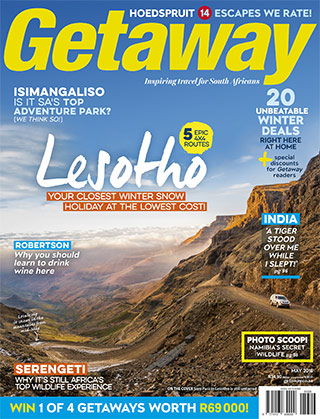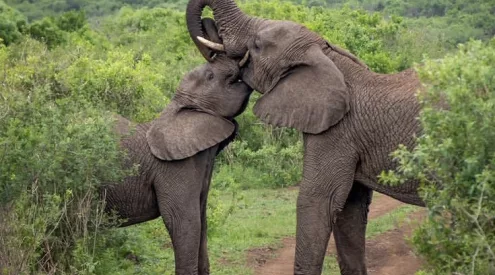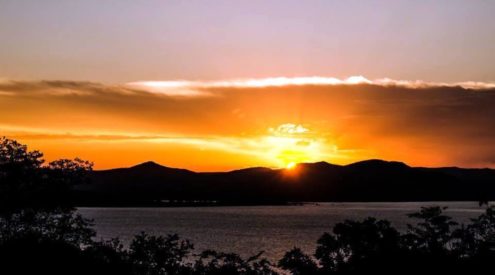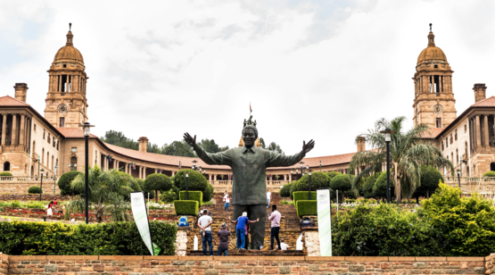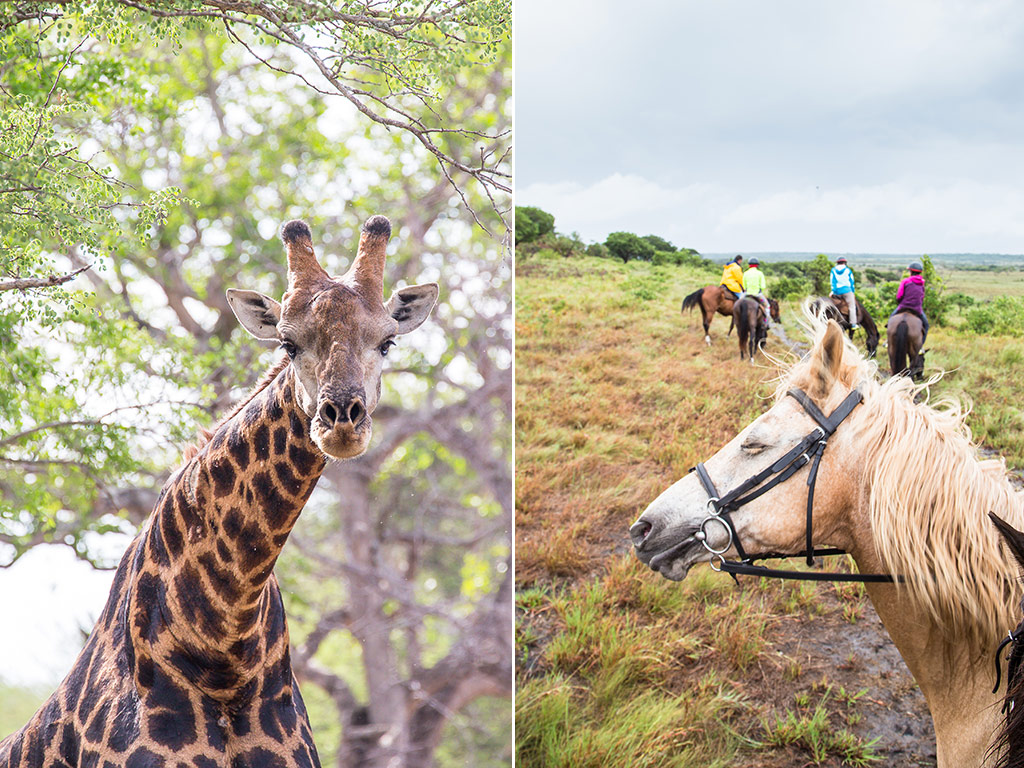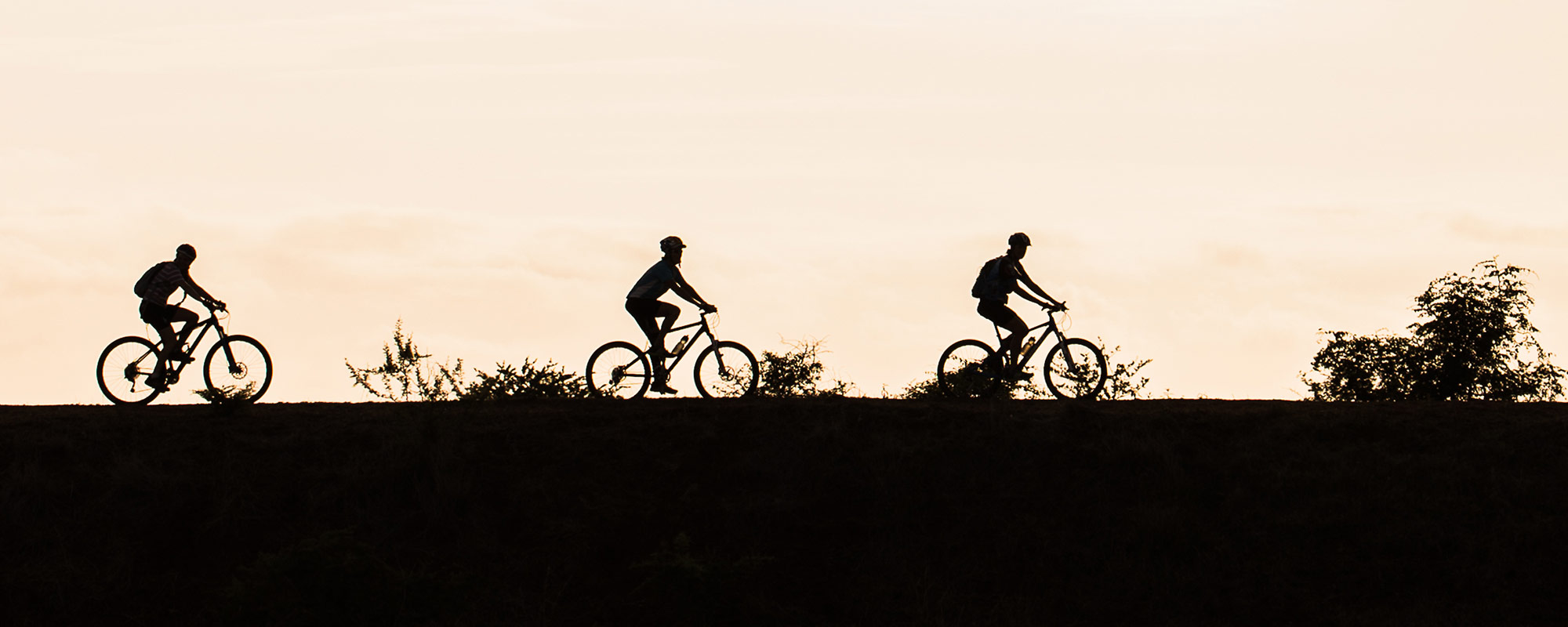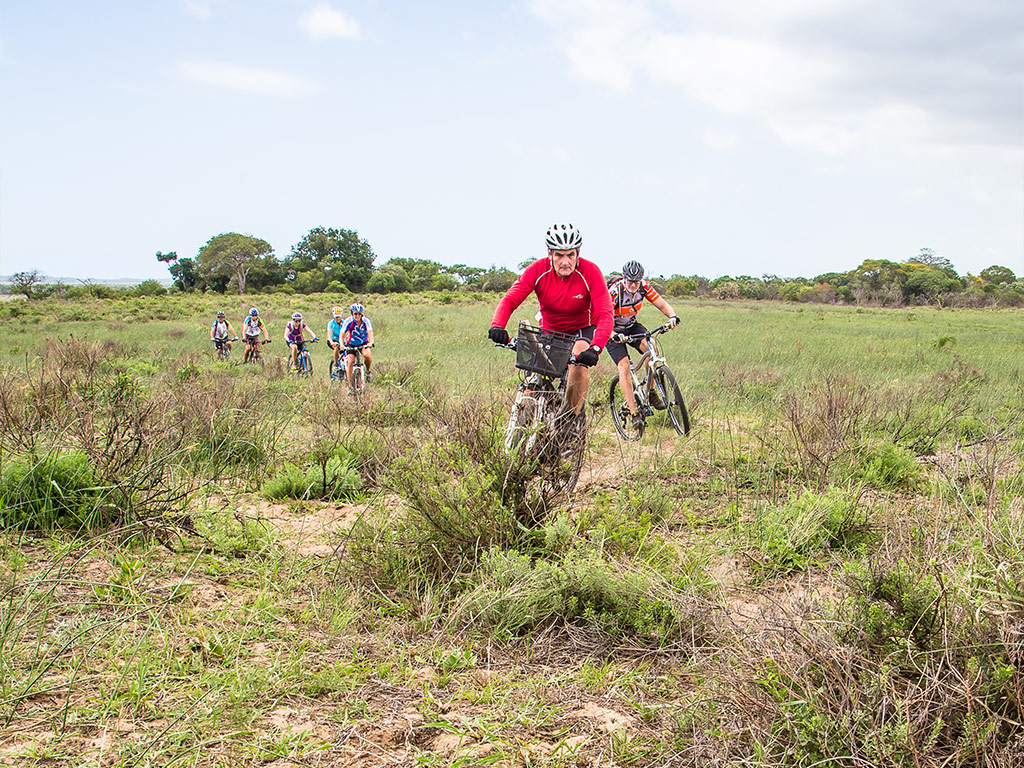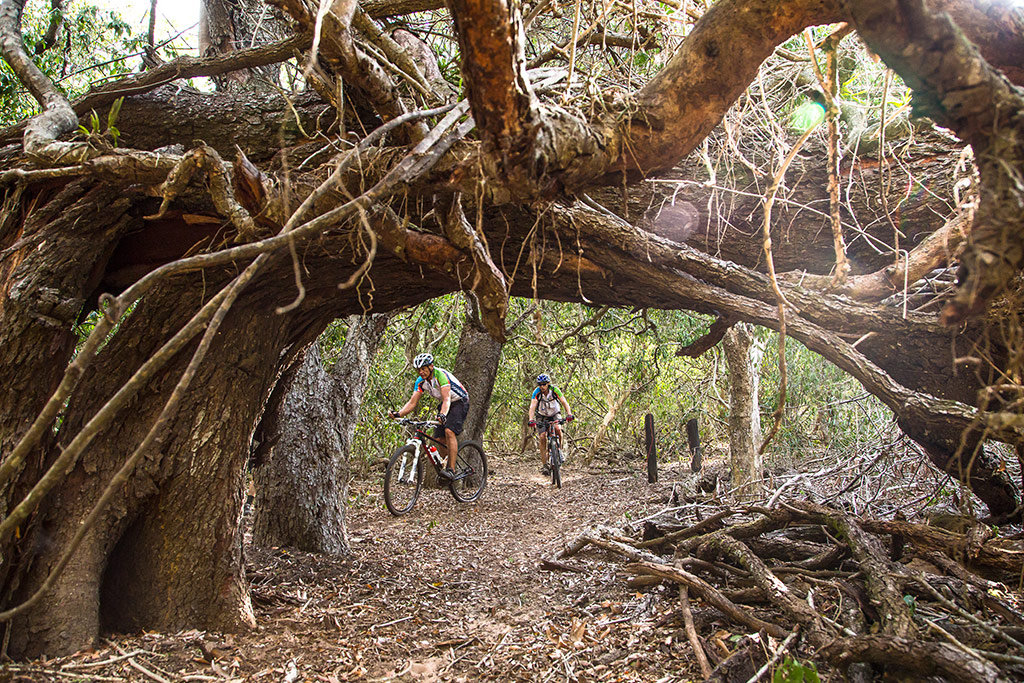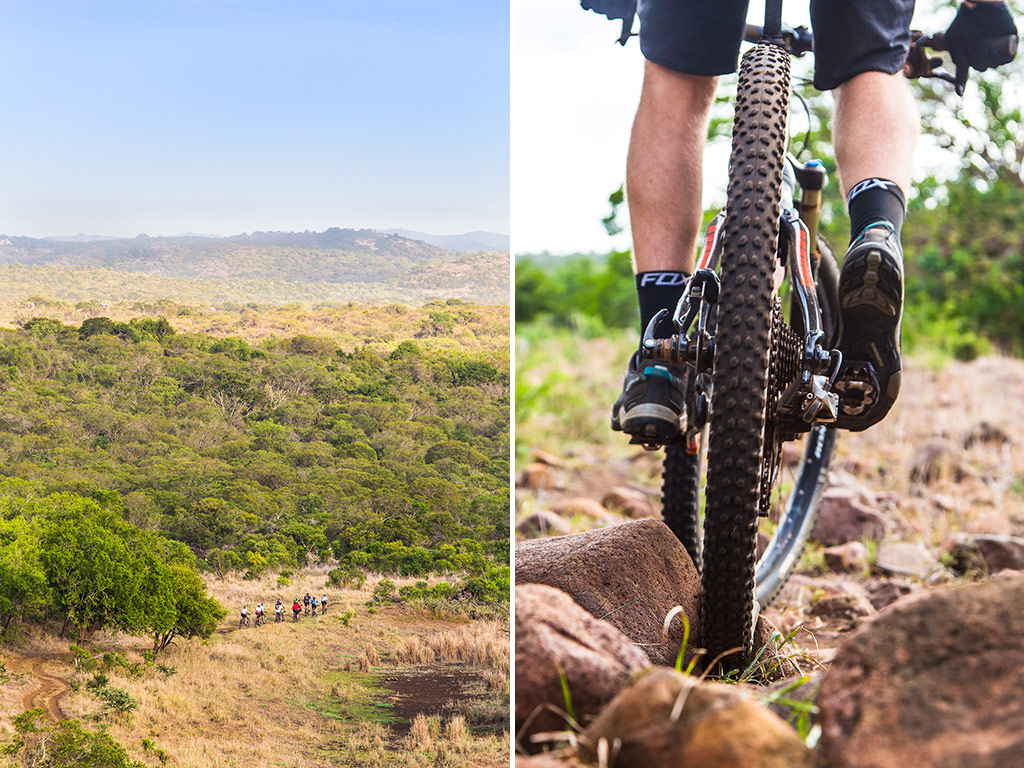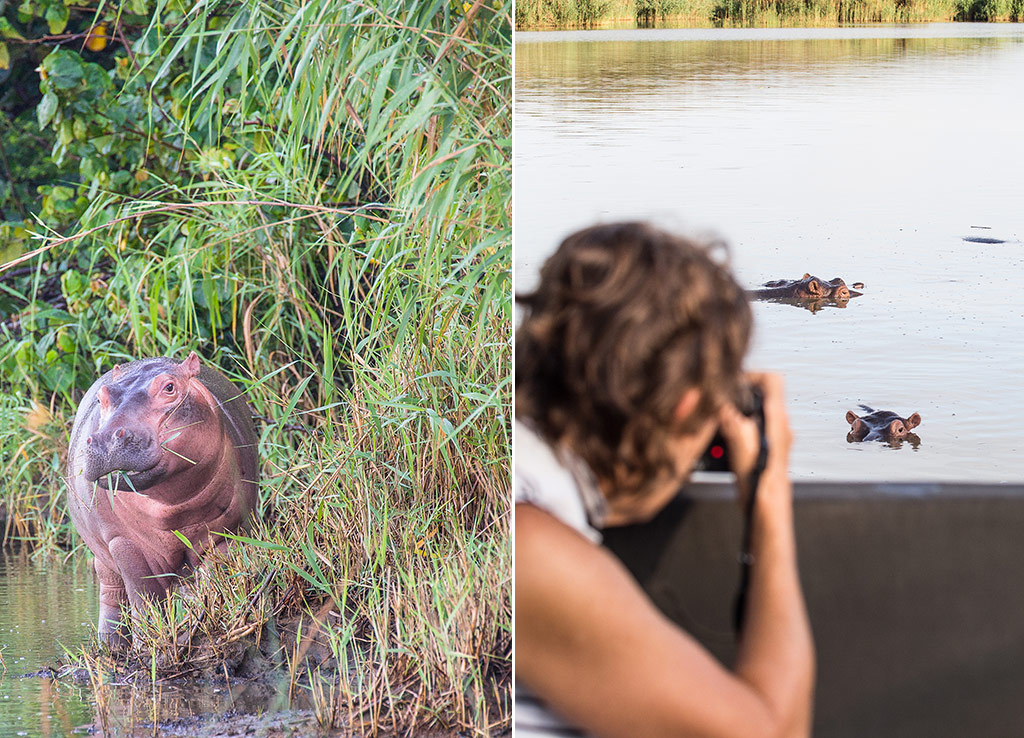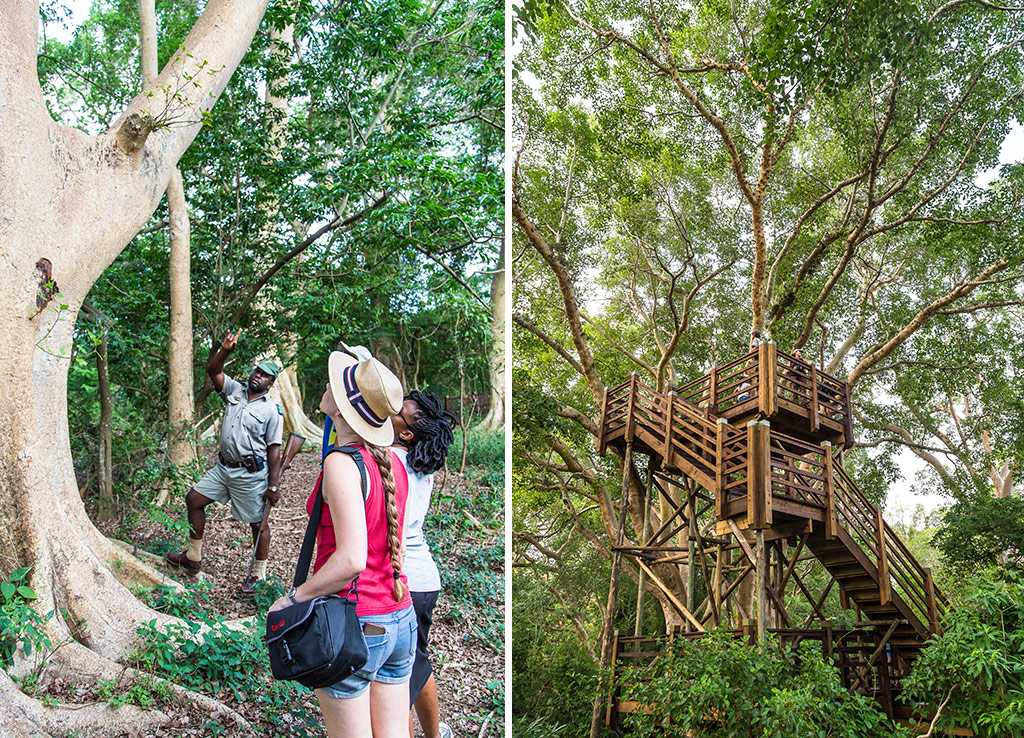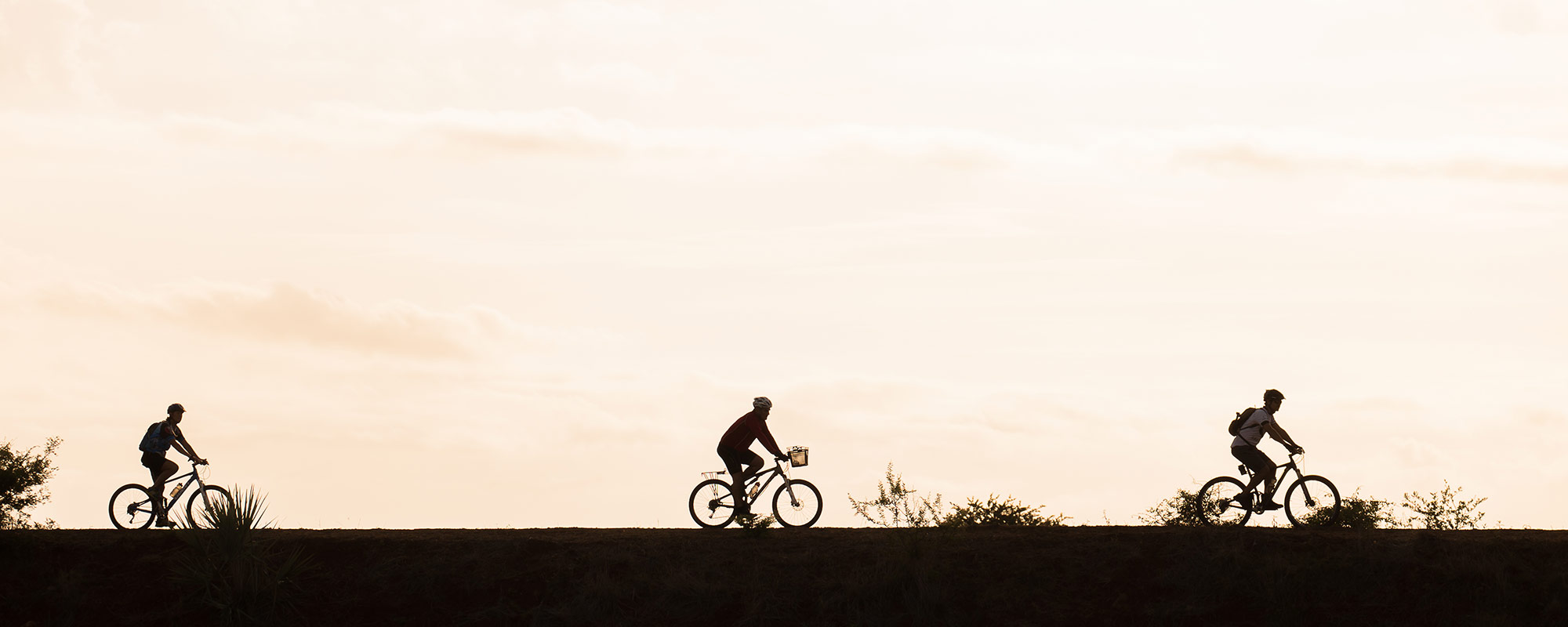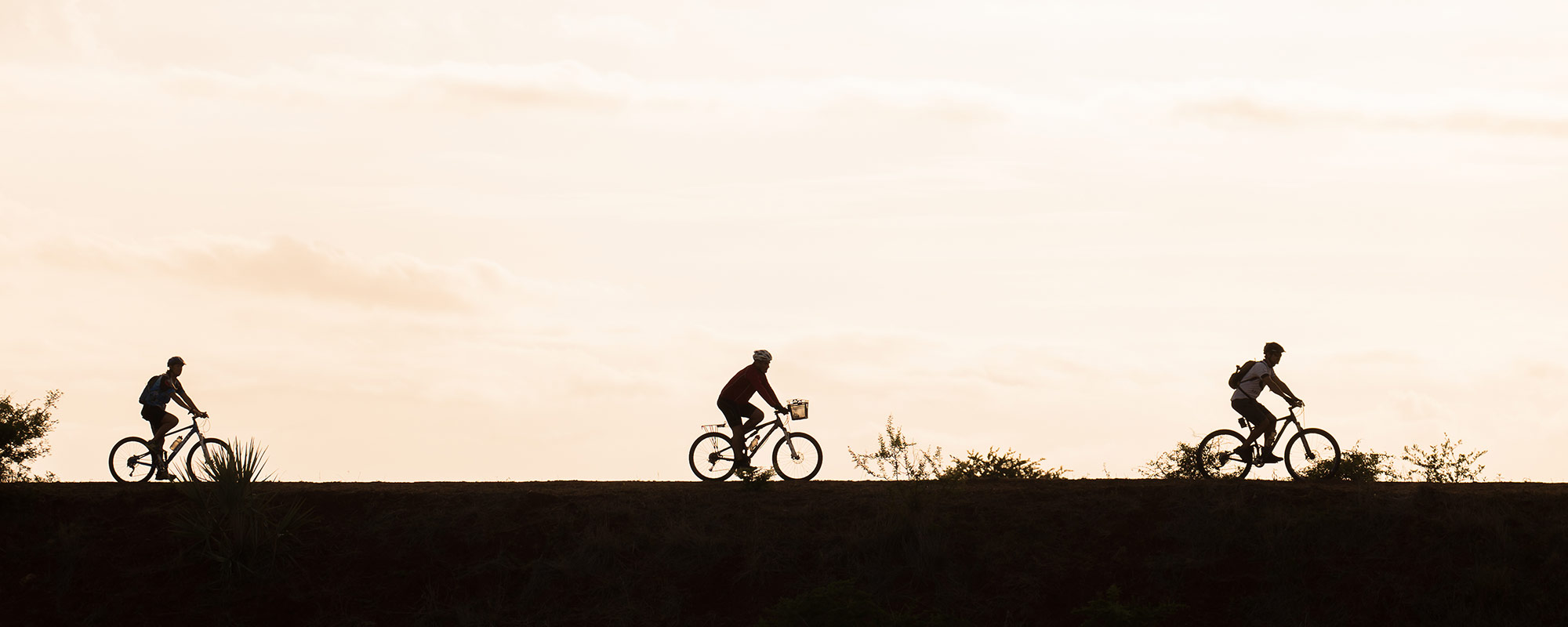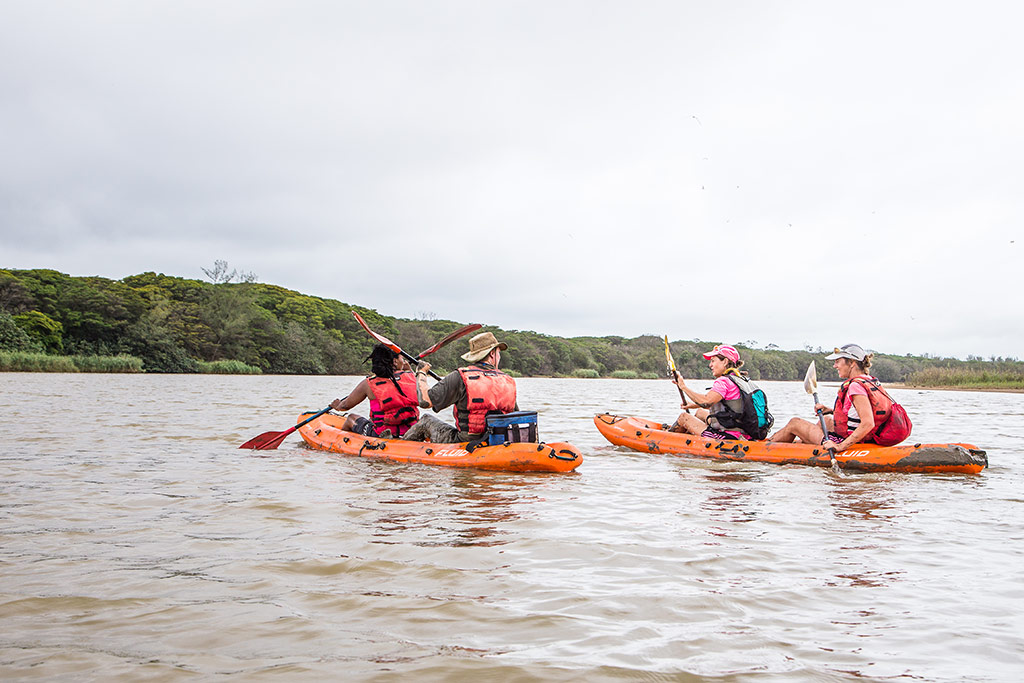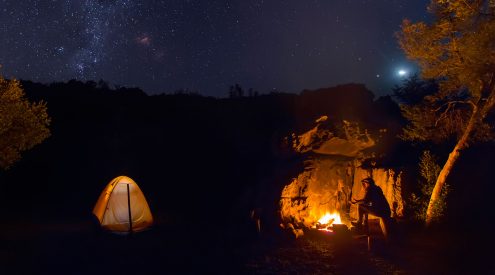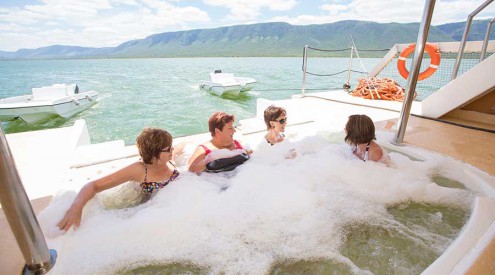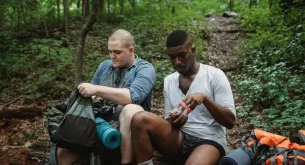Love wildlife and adventure sport? Then iSimangaliso Wetland Park needs to be on top of your holiday hit list. Kati Auld tells you why. Photographs by Tyson Jopson.
Also read: the leatherback turtles of iSimangaliso Wetland Park
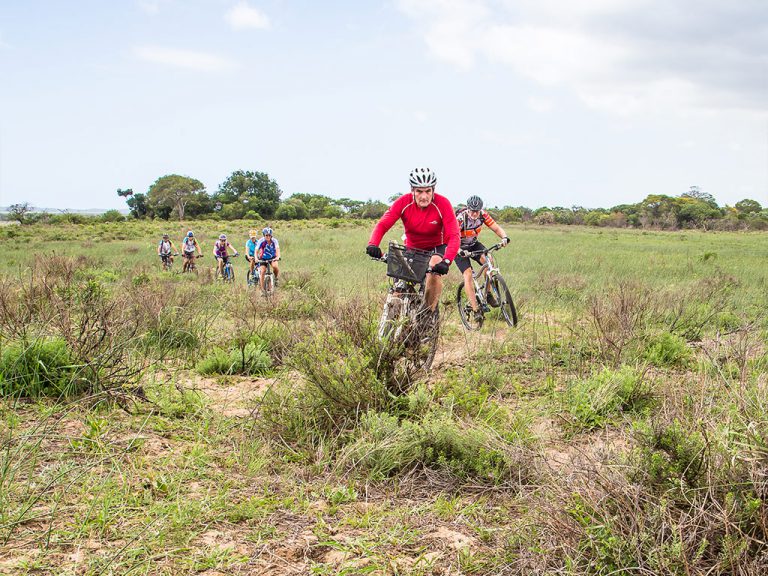
Andrew Zaloumis, CEO of iSimangaliso Wetland Park, tackles a section of the iSimangaliso MTB 4 day.
Gritting your teeth is a lot easier to do when you’ve just inhaled a mouthful of sand.
‘You alright?’ asks fellow journalist Fiona McIntosh. I look over at the bike. It’s been thrown free in the collision between the ditch and my face, but it is somehow murderously unharmed. I, on the other hand, am building on yesterday’s bruises – my left side is developing like a three-day Polaroid, and there’s a vague singing in my ears. But, of course, the woman speaking to me casually mentioned over a glass of wine the previous evening that on her first mountain biking race, she stopped counting after the 40th fall. She crossed the finish line with broken ribs and a goddamn smile. She has scaled more mountains than I’ve had hot dinners, and is quite literally an Olympian (fencing). I’m pretty sure that, in the context, her question is a rhetorical one. So I flash her a muddy grin and trundle back to the bike.
When I told people I was coming to iSimangaliso, the overwhelming response was, ‘huh?’ (It is true that I was asking Capetonians, who aren’t famous for their knowledge of tourist attractions beyond the Huguenot Tunnel.) This is strange because most people have heard of uMkhuze Nature Reserve, and Kosi Bay, and Sodwana, and the Greater St Lucia Wetlands Park (which, I hasten to add, hasn’t existed for almost a decade). But somehow, the mega-park that all of these international attractions are a part of – and which takes up nine per cent of our coastline – isn’t a house-hold name for South Africans.
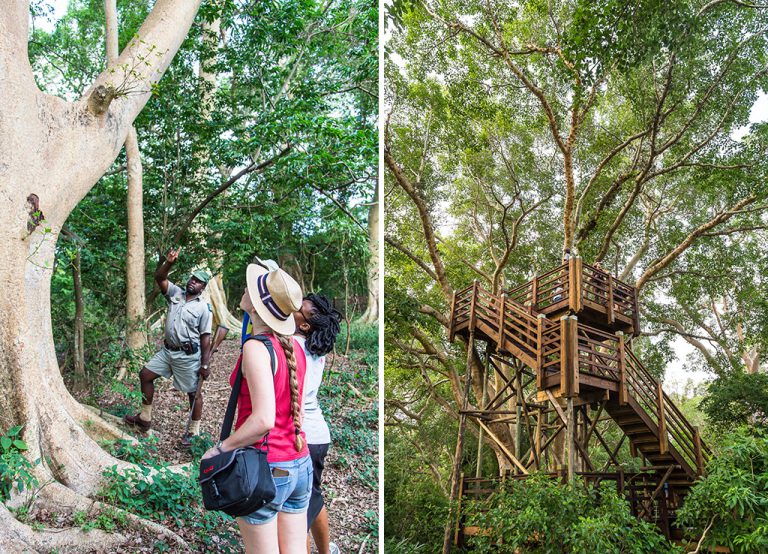
The system of walkways and viewpoints in the Fig Tree Forest takes you up to the forest’s eye level.
As iSimangaliso has been created from different areas, pastiched over time, it offers some of the most diverse landscapes in SA. With 220 kilometres of coast, central plateaus populated with little but thorns and lions, tangled coastal forests and Africa’s largest estuarine system, you could spend a lifetime learning its quirks. It’s also an absolute wonderland for people averse to evolutionary self-defence mechanisms.
iSimangaliso is one of the oldest protected areas in the world – second only to Yellowstone National Park in the United States – and anywhere that has existed for that long in South Africa has a dirty past. Before the area now known as the Eastern Shores was part of the reserve, indigenous Bhangazi people were forced off the land to make way for thirsty pine plantations that annihilated the natural pans. Many land claims have been settled since then, and communities in the surrounding areas have a stake in the success of the reserve: money generated by the park is used to train local guides and tourism officials and a percentage of the gate fees go directly to the surrounding communities.
In some areas, the banishment of the pines has happened fairly recently, and you can still see the occasional stumps in the regrowing savannah like the remnants of a bad dream. Even so, after just a few seasons, the pans have returned – and reclaimed their traditional names.
I spent five days exploring the park – and even though I’m much more enthusiastic about cheese puffs than adventure sports, I found that throwing myself head first into the physical side of the park (sometimes literally) is the best way to explore it. There are very few places in the world where you can be on a game drive in the morning, diving world-class reefs in the afternoon and stalking turtles at night – and falling into bed every night with a weary body and a head full of beauty is the best way to make a week-long holiday feel infinite.
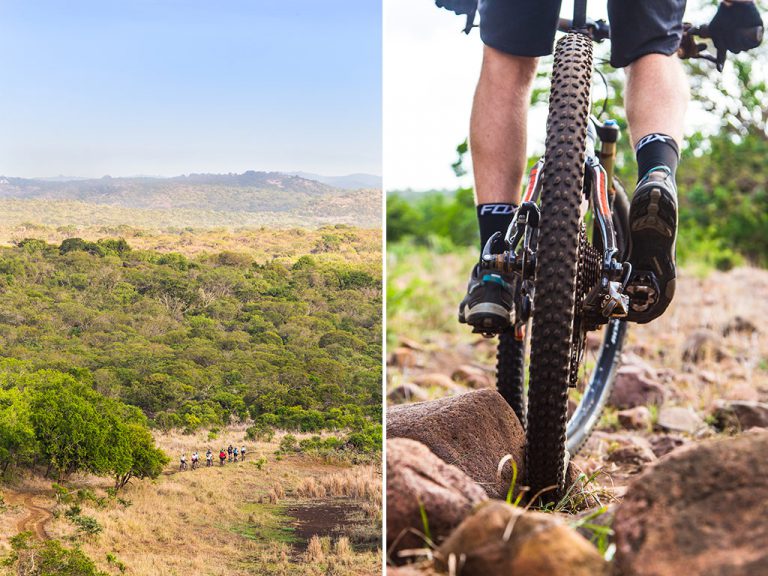
Thorns abound in the dusty inland sections of the iSimangaliso MTB 4 day: equip your bike with tubeless tyres and a slime puncture sealant.
1. Cycling
When it comes to mountain biking I was cautioned that ‘speed is your friend’, and this is unfortunately true – no matter what every cell in your body is screaming. I am by no means a cyclist, but between the muttered prayers and inspirational quotes and mind-numbing fear, I still had an enormous amount of fun (though there are certain sections that still haunt my nightmares). You can explore the Nature Park area of the Eastern Shores, before the cattle grid which keeps the buffalo and other dangerous game out. The real treat, though, is the Ingwe Trail near False Bay, where the taupe leaves scattered on the forest floor obscure the fact that you are riding through one of South Africa’s rare sand forests. I’m assured that the complete Ingwe Trail features sections of spectacularly speedy single track.
There are a number of interwinding routes here, weaving past Lebombo wattle trees that are hundreds of years old, but they all come out at the same place – Sandy Point/ False Bay. With the intensity of the drought, it is currently bone dry, but with its own strange kind of beauty – stretching out into infinity like a bleached Karoo. You can bring your own bikes into the Nature Park and False Bay sections of iSimangaliso at no extra charge. Regular park fees are R40 per person.
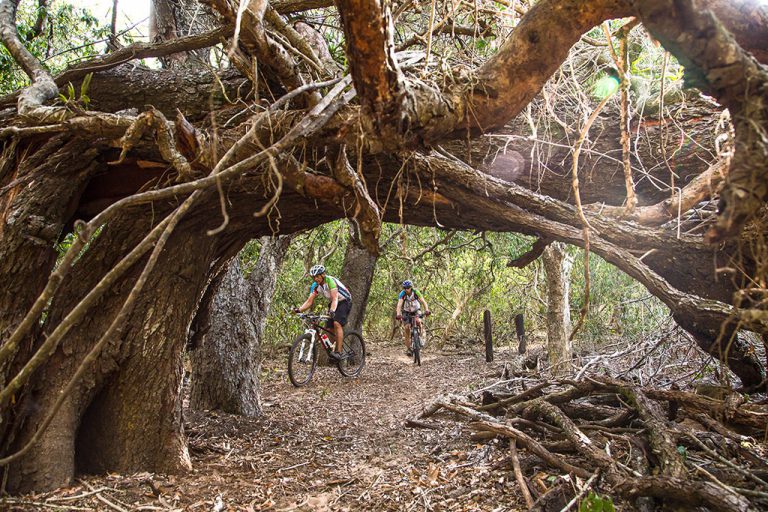
The tangled vines and roots of the Ingwe Trail are twisted up into a glorious mess; it’s beautiful to look at, but don’t get too distracted. In places, it’s tricky to ride.
2. Horse riding
There are two main reasons why horse riding is the best way to experience the Nature Park – first, horses are capable of independent motion, which will come as joyous relief after using your muscles to propel machines for the last few days, and second, because they will allow you to get much closer to any wildlife. Game, usually skittish, are wary of anything unfamiliar – but once the horses start grazing, they figure there’s nothing to worry about. We saw countless grey duiker, as well as getting up close to a pair of fuzzy waterbuck and their even fuzzier offspring. Of course, the equine capability for independent motion can be the most terrifying part of a horse safari; but these horses know the area well, so there’s very little for timid riders to worry about. Don’t stray too close to the water though, as horses have been taken by crocodiles in the past. Rides with Bhangazi Horse Safaris are from R350 per hour.
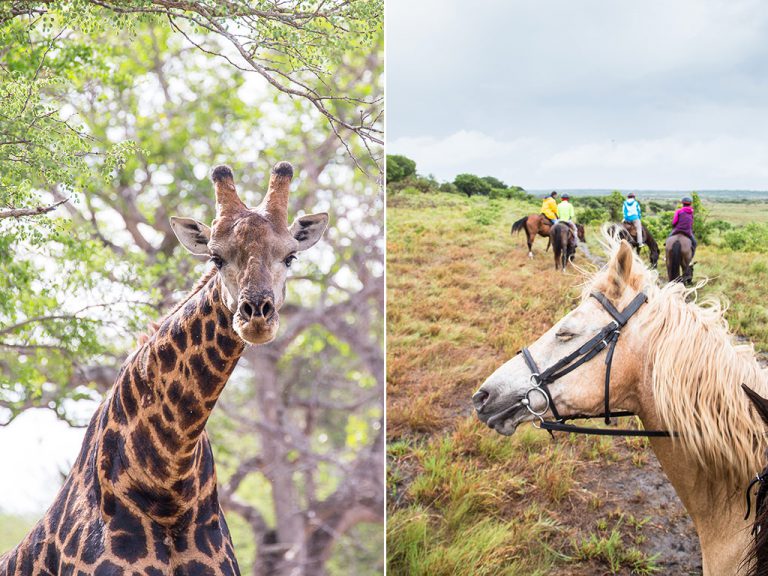
The creatures you’ll spy in the undergrowth range in size; but on horseback, they’re a lot less skittish.
3. Diving in Sodwana Bay
The next day, we took the 90-minute drive down to the coast, and everything was different. In uMkhuze, the drought made even the air feel dry. But here, it was lush, green, and hammering down with rain. Now everything was wet – monkeys morosely searching for berries, and a party of about 30 mongooses, their fur sticking out at odd angles, making a dash for the shelter under the deck of Kosi Bay’s general store. But as much as I love a good mongoose sighting, the biggest wildlife drawcard here is underwater. Getting down to eye level at Five Mile reef felt very much like being let loose in Tiffany’s – every surface glittering with colour and intricate detail. I saw a potato bass at a cleaning station, being fussed over by wrasse attendants, and clown fish peeping in and out of the anemones.
The reef system at Sodwana is spread out and there’s a lot of scope for divers of different experience levels. You can get your PADI Open Water Diver course (valid internationally) at Coral Divers for R3 000 per person, including equipment hire, accommodation, log book and four open-water dives with an instructor. If you don’t have the time or the money, do the Discover Scuba Diving course for R920 per person, which I did – this includes equipment hire, one pool session and one dive with an instructor. If you want to dive in future though, you’ll need to do it again.
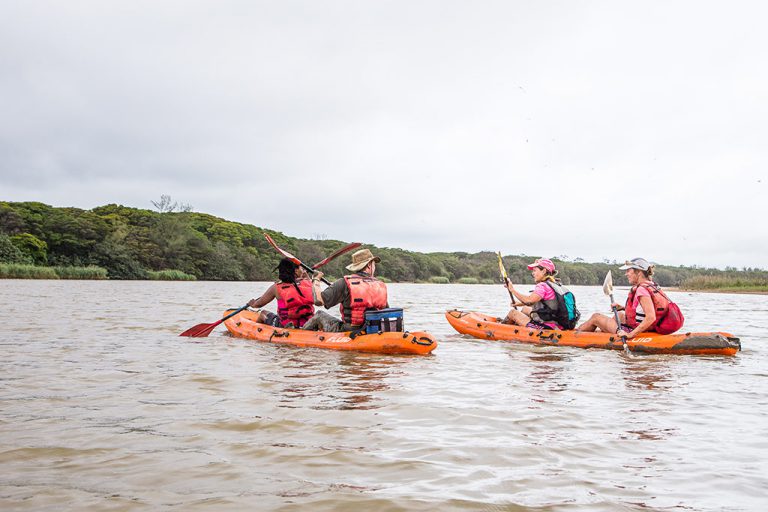
Kayaking on the St Lucia estuary, on the lookout for crocs.
4. Kayaking in iSimangaliso
Kayaking on the St Lucia estuary should have been the least of my worries, after the exertion of the previous three days. That all changed when our bright- toothed guide Frikkie told us that if a croc comes up to the kayak, the best course of action is to hit it on the head with your paddle. Luckily on our trip, the crocs were more somnolent than curious. For this relaxing two-and-a-half hours, you don’t need to be particularly paddling-fit – but next time I’ll challenge myself to the Catalina Bay trip, which takes about four hours and more heft. From R295 per person – you can also do half-day or full-day paddling experiences with St Lucia Kayak Safaris. kayaksafaris.co.za
5. Take a boat safari
Shoreline Boat Safaris’ cruise on St Lucia estuary was a bit like watching a tennis match – I didn’t envy the photographers, as they tried to fit a juvenile flamingo, family of waterbuck, Goliath heron, crocodile and a hippo into one frame as a pair of fish eagles provided a duet. It’s really close to town, so close that the hippo stroll over at night and graze on the sweet manicured lawns of St Lucia’s residents. From R220 per person for two hours, stluciasouthafrica.com
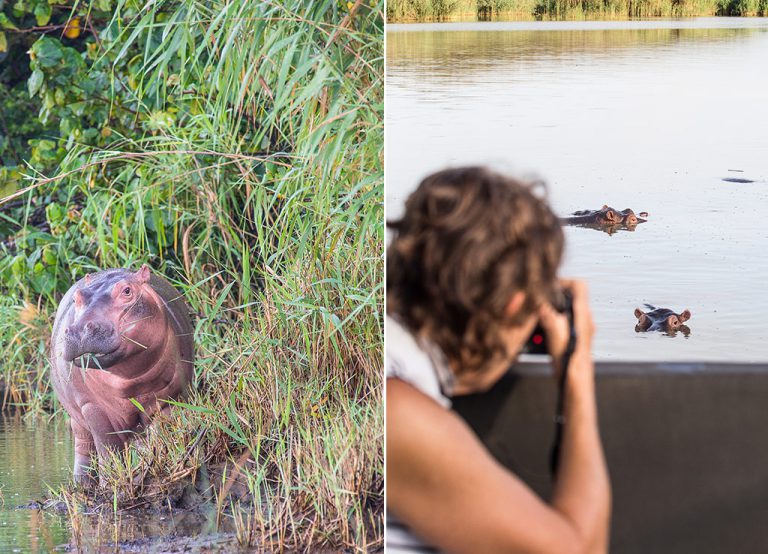
Young hippos are the most rubbery-looking of all animals.
5. Walking in iSimangaliso
I’ve always maintained that figs are quite clearly the world’s best tree. The Fig Forest in the uMkhuze section of the park, though, bears little resemblance
to the organic jungle gyms of my youth – towering behemoths, so tall that you have to lean back into a question mark to see the tops of them. What sets this forest apart is the structure of swaying aerial bridges and multi-levelled platforms built around them, bringing you up close to the papery bark of the sycamore figs. You’ll need a private guide to tour it though, since lion, buffalo and elephant have been introduced to this area.
Book a walk through Mantuma Camp, run by Ezemvelo KZN Wildlife, for R230 per person. The walk itself will take about an hour, and then you can have sundowners at the nearby iNsumo pan.
Adventure events in iSimangaliso
iSimangaliso MTB 4 Day
While there are parts of the park that you can cycle year-round, the big-game sections of iSimangaliso are not available for cycling outside of the iSimangaliso MTB 4 Day event when a significant team of sweepers attempt to keep the cyclists out of harm’s way. It’s just as well, seeing as we came across a pair of white rhino on our venture. Having had a taster of the route, I think it’s something every fit, wildlife-loving South African should try; and if you’re already a cyclist, it should be on your bucket list. The race takes place from 18 – 21 August 2016. Entry is R6 480 per person, and you can register at isimangaliso-mtb.co.za.
iSimangaliso St Lucia Half Marathon
This year the park also hosted the ever-growing iSimangaliso St Lucia Half Marathon powered by Excellerate. The route takes runners along the edge of the St Lucia Estuary which combines both forest and beach views on an epic route that explores the region’s beauty. This year’s race was in May: find out about next year’s event on the iSimangaliso website. isimangaliso.com
Travel planner for iSimangaliso Wetland Park
Getting there
From Durban, take the N2 north for 179 kilometres, then the R618 to Mtubatuba and St Lucia. Two kilometres before St Lucia, take the turn-off to Dukuduku Gate. There are many entrances to the park ‒ your entry point depends on your itinerary.
Things you need to know
There is a reason for the statue of a hippo on the main street of St Lucia: be careful driving at night. There’s a minimum time from one iSimangaliso gate to another, to discourage people from using the park as a thoroughfare. If you arrive inside of the allotted time, you’ll have to wait at the gate. Between Ophansi and eMshophi, the travel time is one hour and from Nhlozi to Dukuduku 90 minutes. Also, if you go snorkelling with your own equipment (especially in the area around Cape Vidal) be aware of the vicious rip tide. Park fees are R45 per person (includes a R5 community levy) and R50 per vehicle.
Things to do in iSimangaliso
Have a picnic at Mission Rocks because you have most certainly earned it. The picnic site has tables nestled into the coastal forest, ablutions, and you’re right next to a beach where at low tide, the rock pools will keep little ones occupied. Mission Rocks is 16 kilometres north of St Lucia on the Cape Vidal road ‒ you’ll have to turn off onto a short gravel track before you reach the car park.
Places to eat in St Lucia
Braza, in St Lucia, is a Portuguese restaurant with a variety of Mediterranean foods but is known for its ‘world-famous espetada.’ There’s an Ocean Basket next door, and by some fluke of administrative genius, you can order from either restaurant at Braza. Mains from R85 per dish. 035-590-1242, brazzarestaurant.co.za
Where to stay in St Lucia
AmaZulu Lodge’s rooms are set around a central pool. There are some minor Africana aesthetics, and the rooms are big with a gargantuan bath and very effective aircon (a necessity in the KZN humidity). From R640 per person sharing.
@Heritage House has just nine rooms at this quirky boutique guest house, so it has an intimate ambience that’s not intrusive. Breakfast is included ‒ don’t miss the glorious hash browns. They will cater for you for dinner, if you don’t feel like moving at all after a hectic day. There is also an outside suite for a bit more removed privacy. From R450 per person sharing, B&B.
Mseni Lodge is one of the only accommodation options that’s actually inside the park, rather than in St Lucia. The self-catering wooden cabins are mostly surrounded by coastal forest and down-to-earth enough that you don’t feel bad about walking inside with sandy feet. From R415 per person sharing.
This article was originally published in the May 2016 issue of Getaway magazine.
Our May issue is packed full of great holiday ideas. Get your copy today.
